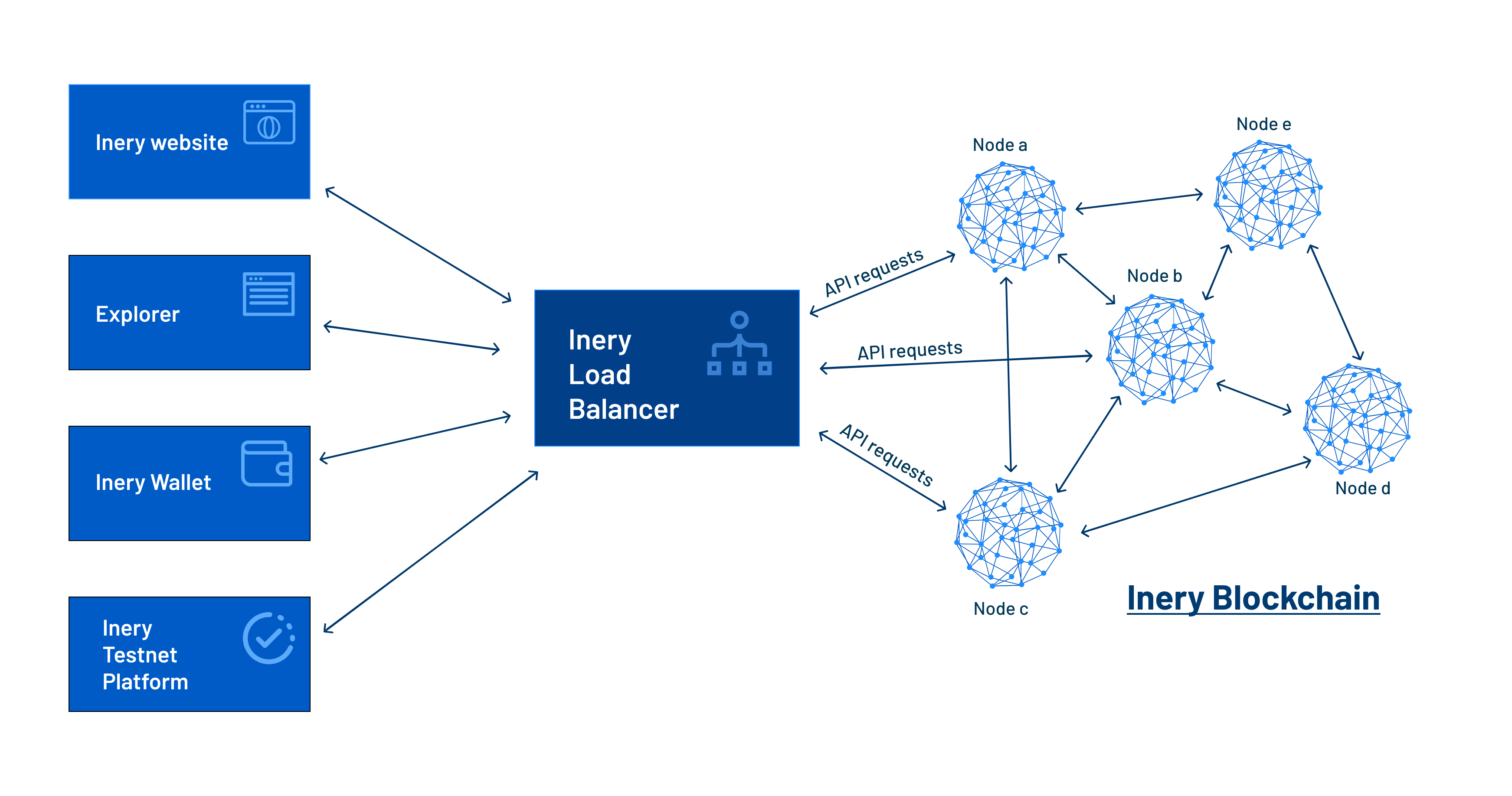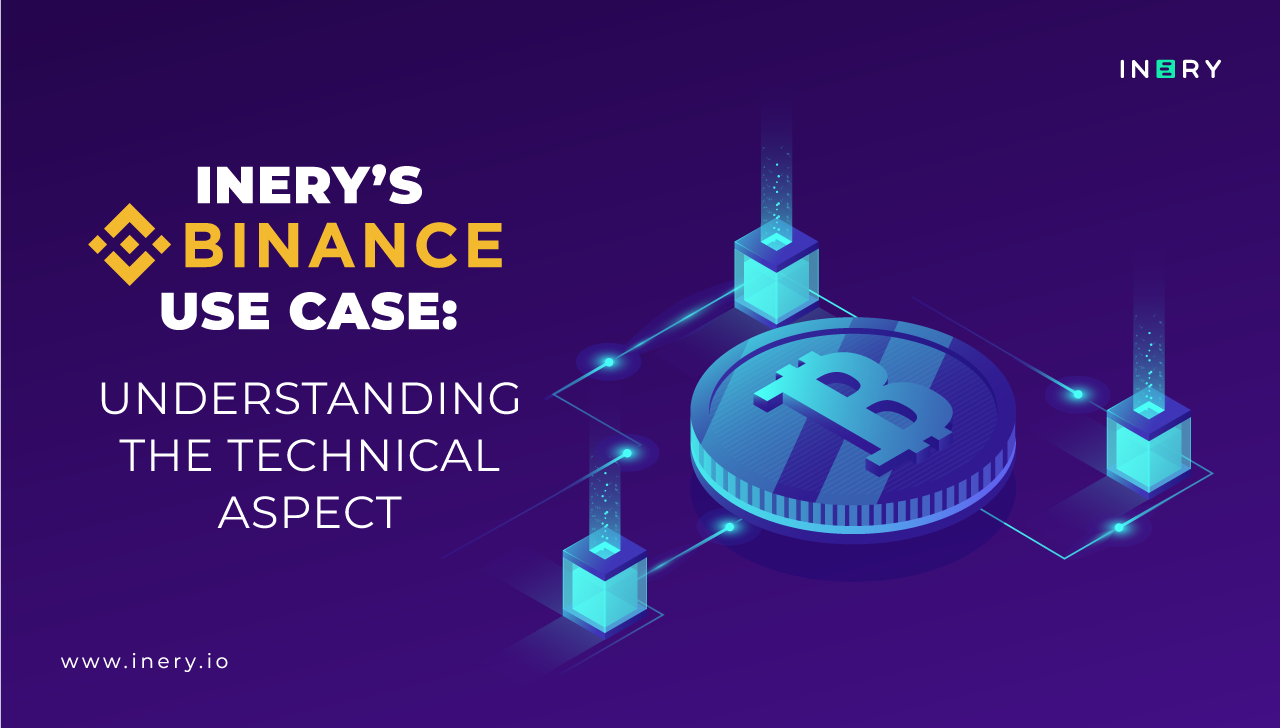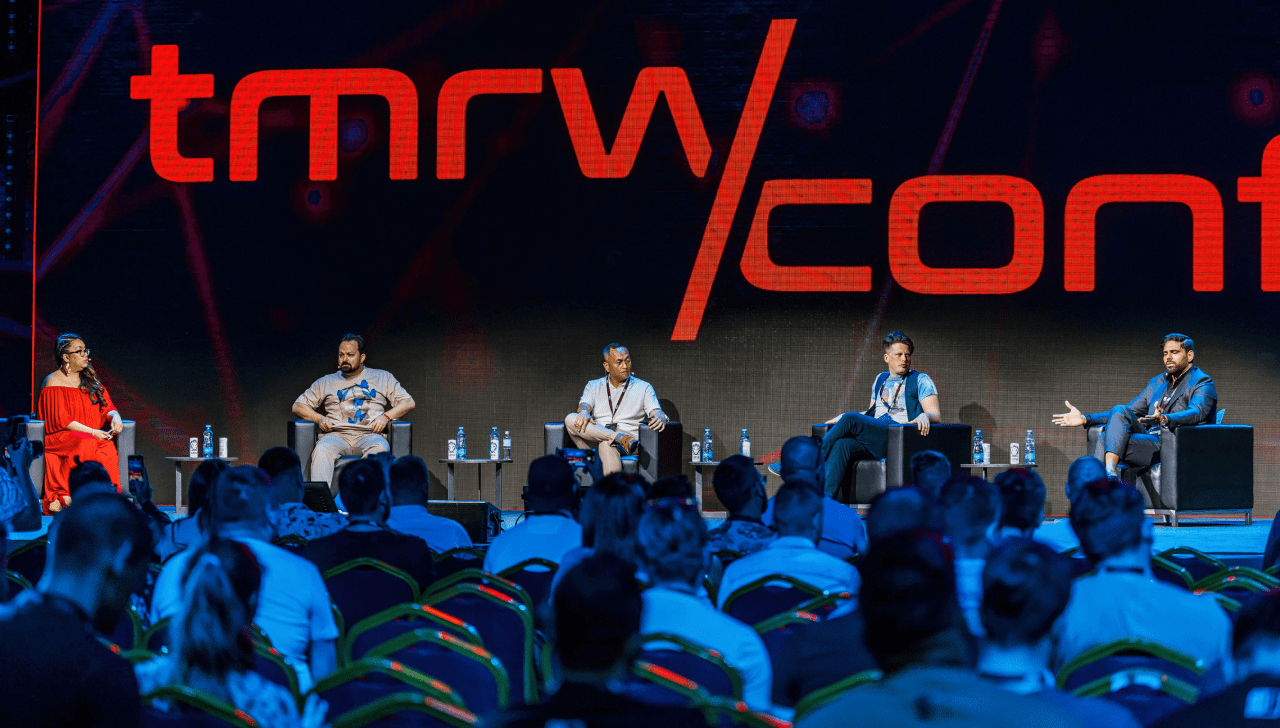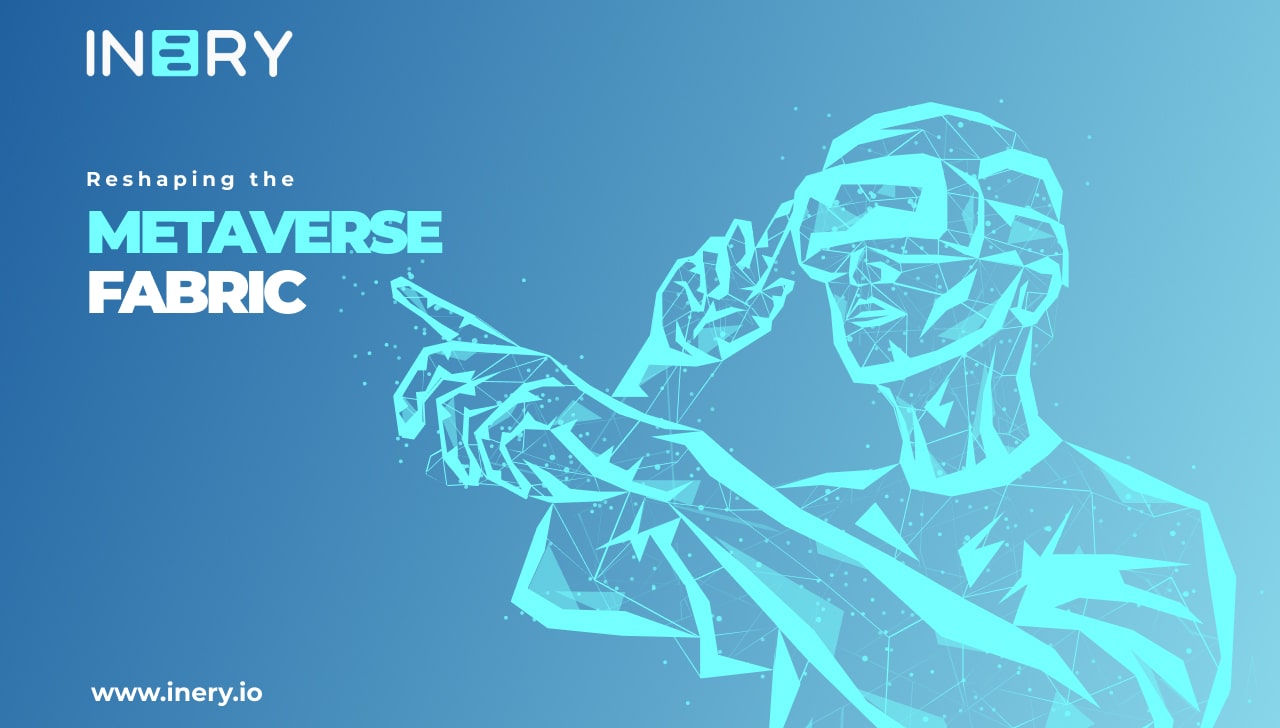IneryDB uses its underlying blockchain architecture to create a dynamic data network resistant to traffic bottlenecking. But blockchains aren’t immune to such issues: individual nodes can still face more transactions than they can process.
To reduce request overload risks even further, IneryDB, the world’s first blockchain-based SQL and NoSQL DBMS, has rolled out its very own load balancer solution.
How Does the IneryDB Load Balancer Work?
A load balancer helps allocate incoming network traffic across multiple servers or resources. Its primary purpose is to ensure optimal resource utilization, maximize performance, and enhance the availability and reliability of applications or services.
Operating at the network or application layer, load balancers act as an intermediary between clients and servers. Here’s how a load balancer basically works:
- A client sends a request to access a service or application
- The load balancer receives the request and determines which server or resource should handle it
- The load balancer forwards the request to the selected server, effectively distributing workload across the network

Most Common Load Balancing Techniques
Programs like the IneryDB Load Balancer employ various algorithms to distribute traffic among servers. The best method depends on factors such as:
- Server capacity
- Current load
- Response time
Common load-balancing algorithms include:
- Round Robin: Requests are evenly distributed among servers in sequential order (first request goes to the first server, the second to the second server, etc.)
- Weighted Round Robin: Servers are assigned different weights, and requests are distributed accordingly, considering their capacity or processing power
- Least Connections: Requests are directed to the server with the fewest active connections at the time they’re made. This is the method implemented by IneryDB Load Balancer
- IP Hash: The client's IP address is used to determine which server should handle the request, ensuring that subsequent requests from the same IP are routed to the same server
Solutions such as IneryDB Load Balancer provide several key benefits:
- SCALABILITY: By evenly distributing traffic, load balancers allow systems to handle increased loads by adding or removing servers as needed
- PERFORMANCE: Load balancers improve response times by distributing requests among multiple servers; thus, no single server becomes overwhelmed
- FAULT TOLERANCE: If a server fails or becomes unresponsive, the load balancer can redirect traffic to healthy servers—ensuring continuous availability of services
- SSL TERMINATION: Load balancers can offload SSL encryption and decryption tasks, reducing the related processing burden on individual servers
- HEALTH MONITORING: Load balancers can regularly check the health and availability of servers; based on that knowledge, they can remove or redirect traffic from malfunctioning servers.
Overall, load balancers play a vital role in ensuring the smooth operation of distributed systems by intelligently distributing traffic, optimizing performance, and enhancing the overall user experience.
Load Balancers on the Blockchain
On the blockchain, a load balancer distributes requests across nodes (servers) to streamline performance. When a node receives particularly large amounts of traffic, the balancer shares that workload among the nodes.
This way, no server on the blockchain receives more workload than their processing power can handle. Overall network throughput can be much higher as a result, minimizing response time and allowing applications to scale without fear of dips in performance.
Ensure Optimal Request Management With IneryDB Load Balancer
IneryDB’s NodeJs load balancer harnesses the power of the blockchain to protect applications against overwhelming traffic spikes. It intelligently manages and schedules blockchain RPC API web requests, thus optimizing throughput.
Use the IneryDB Load Balancer for real-time monitoring of resources like:
- Server real-time request number
- Maximum request number for every node independently
- Active status (with the possibility of activation and deactivation of the server)
- Server health status and performance
- Alive status
With real-time info on these metrics, you have the power to manage server health before any network issue even arises.
IneryDB’s load balancer leverages fault tolerance and dynamic resource management to deal with a broad array of traffic anomalies. It also uses the least connection algorithm, which works wonders for requests of varying connection times. As such, this load balancer is a hand-in-glove fit for flexible and/or scaling applications.
The IneryDB Load Balancer is an elegant yet powerful solution that helps your databases are secure and working at optimal capacity. It gives your applications the flexibility and potential to grow and suit your unique needs. Add IneryDB’s decentralized, blockchain-based solution to the mix, and you’ll enjoy even more stable traffic management.
With Inery, the future is just a node away—and this solution helps us carry the load on our way there.

Inery•
2 years ago
Inery's Binance Use Case: Understanding the Technical Aspect
Last week, we talked about Binance’s database issue and how Inery can solve it. In this week’s blog, we are going to take a closer look at the technical aspect of Inery’s Binance use case. ...READ MORE

Share

Inery•
2 years ago
Connecting the Disconnected Web 3.0: Inery At TOMORROW Conference, Belgrade
A run-down of everything that happened at one of the Europe’s biggest NFT, Crypto and Metaverse conference ...READ MORE

Share

Inery•
2 years ago
Reshaping the Metaverse Fabric
IneryDB provides a unifying platform that acts as a bridge between all the siloed metaverse initiatives and help accelerate the development of the metaverse ...READ MORE

Share

Inery•
10 months ago
The Intersection of IoT, AI, and Blockchain: Security and Efficiency
Uncover the synergy of IoT, AI, and Blockchain in enhancing security and efficiency. Delve into their history, importance, and how Inery pioneers this convergence for a connected future. ...READ MORE

Share
Most popular today



